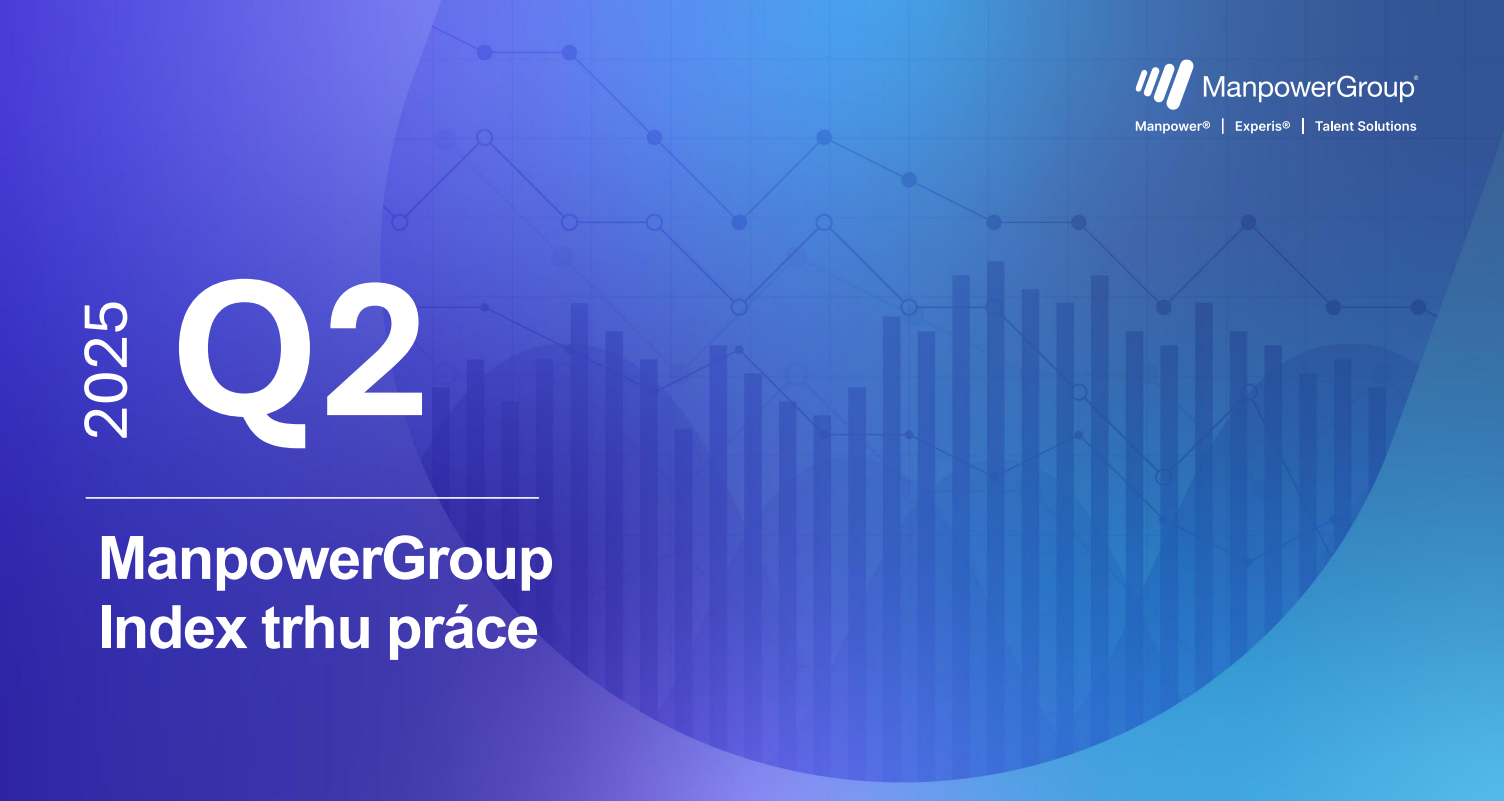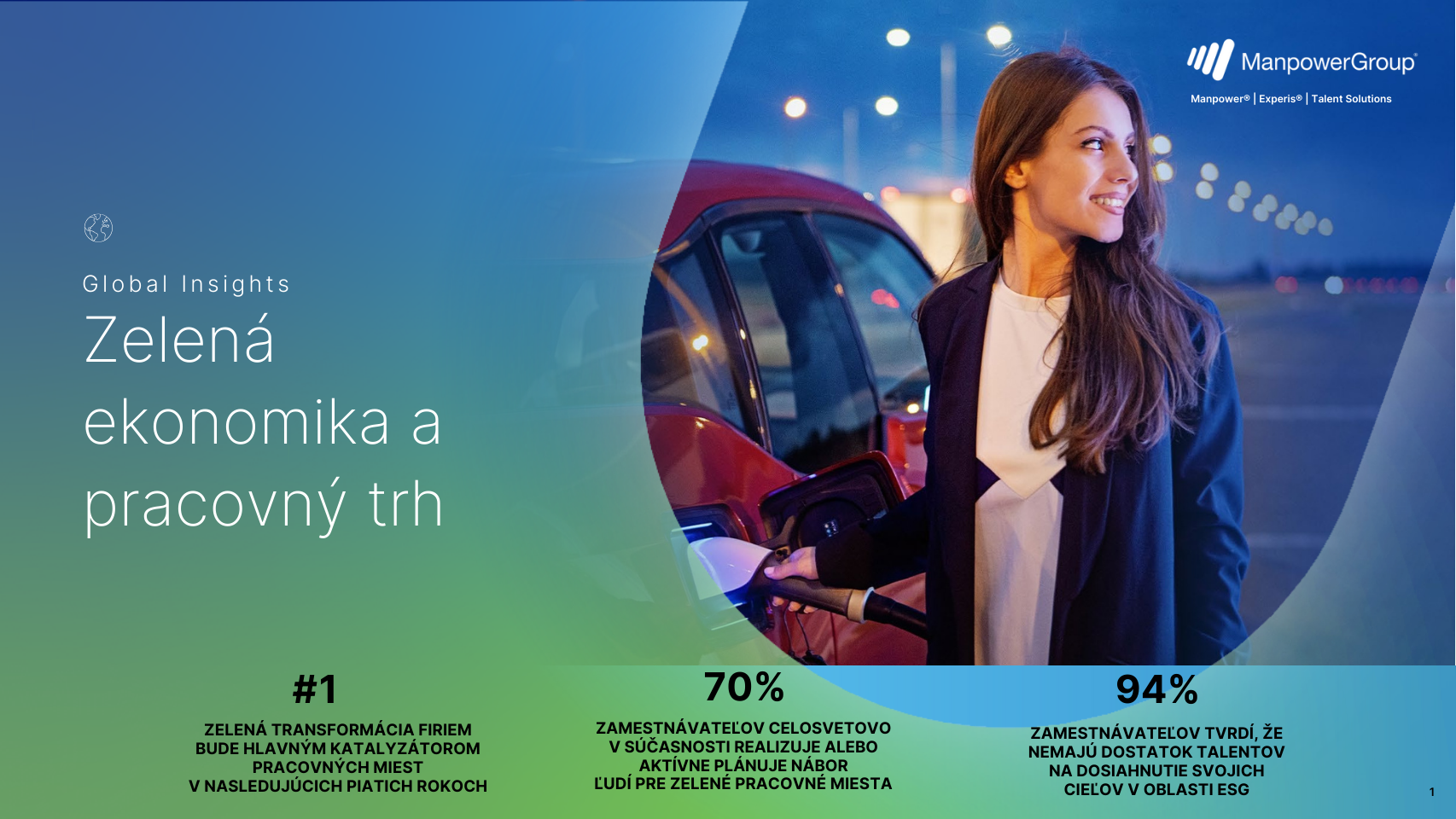The Slovak Labor Market Is Still Attractive To Foreign Investors Due To Its Market Stability, High Labor Productivity, Lower Business Costs And Workforce Availability.

Bratislava, February 23, 2022 – ManpowerGroup has created a metric consisting of 200 parameters to accurately compare labor markets in 76 countries around the world, including Slovakia, mapping the relative ease of sourcing, hiring, and retaining as well as maintaining workforce in individual countries. In addition to traditional employment contracts, the metric also considers factors such as flexible workforce, alternative contracts, or informal labor market.
The parameters are divided into 4 main groups:
- Workforce Supply/ Workforce Availability: these parameters include the level of unemployment, education, qualification structures, language proficiency, the abundance of flexible and informal workforce, the age structure of employees, equality of people within the labor market, the structure of employment in individual sectors, and others.
- Cost efficiency: comparison of wage, benefits, taxation, other levies, wage supplements, maternity and parental leave costs, wage level within different types of positions, costs of starting & doing a business, and others.
- Productivity: the number of hours employees work for basic pay (working time fund, paid days off), probationary periods, authority and infrastructure efficiency, ICT equipment of residents, and more.
- Regulation: flexibility level, possibilities for subcontracting, possibilities for concluding fixed-term contracts, length of notice period, retirement age, visa policy and openness of the economy to foreign labor, level of corruption, threats of terrorism, economic risks, restrictions on foreign investment, etc.
Survey results – global
- The top 5 markets of the overall global TWI rankings are: the United States, Singapore, Canada, Hong Kong, and the Netherlands.
- On the contrary, the lowest positions of the Total Workforce Score belong to South American countries: Paraguay, Bolivia, Nicaragua, and Honduras.
- The top-rated countries in terms of Workforce Supply include: the US, Singapore, and Switzerland.
- The most cost-effective locations are Thailand, Hong Kong, and Macau.
- In terms of the Regulatory environment of the labor market, Norway, Estonia, Austria, Finland, and Denmark are the most attractive countries for investors.
- Israel, Netherlands, and Singapore lead in Productivity.
However, if we want to find the ideal business destination for a particular company, we need to correctly adjust the ratio and weight of individual parameters, based on its business and HR strategy.
Survey results – Slovakia
- The Slovak Republic ranks 40th out of 76 countries included in the overall global TWI ranking.
- Compared to 2017, when the survey started to be carried out, Slovakia improved its position by 10 places.
- In the Europe, Middle East, and Africa (EMEA) region, Slovakia ranks 25th out of 40 EMEA countries.
- The TWI survey states that 1/3 of the economically active population in Slovakia is qualified for white collar positions.
- The TWI survey also shows that almost a fifth of the workforce in Slovakia meets the conditions for remote work.
- Combined with 26% of the workforce with the ability to work in an environment where the communication language is English, the survey confirms that there is potential in Slovakia to perform a wider range of remote jobs from shared service centers, call centers, technical support, up to Research & Development entities.
“Undoubtedly, the Slovak Republic is one of the markets that are interesting for foreign investors. For every company that comes to the European area, the combination of factors such as market stability, favorable geographical location, Eurozone membership, and the fact that Slovakia is one of Eurozone´s least indebted economies is certainly attractive.
If we add high labor productivity within the region, lower labor costs in comparison with the global and European averages, workforce availability, as well as the progressive improvement of business environment by the state, for example in the form of attractive investment incentives and special tax regimes for Research & Development activities, we will get other reasons that speak in favor of investing in Slovakia.
The Slovak Republic represents a small workforce market with relatively low unemployment rate, so there is a higher difficulty to fill many open positions within a short period of time. The truth is that lower wages, mainly in manufacturing, especially in the automotive industry, that were the most attractive factor for foreign investors in the past, are now in decline. Now and in the future, good ICT accessibility and literacy, educational level, foreign language proficiency as well as the degree of digitization and automation will play an increasingly important role.
I see this all as our great potential: the more focus will be given on the development of education, including language learning and dual education connecting schooling with practice, the more we concentrate on supporting science and research, on improving infrastructure and legal environment for foreign investments, the more investors will be attracted to Slovakia.
Factors mentioned above will be able to move our country in ratings much higher in the future and will attract even more attention from multinational companies of the whole spectrum of segments: from manufacturing, automotive or logistics companies, to IT and Research & Development ones.
Due to pandemic, our workforce market has been restructured. The growing demand for less qualified or unskilled positions in logistics, manufacturing and production is facing limited supply, which is leading to a gradual increase in wages, to applying a little more flexibility into the workforce management, and also to the reduction of requirements of the candidate´s education or experience,” says Zuzana Rumiz, General Manager of ManpowerGroup Slovakia, adding: “In my opinion, the main reasons why Slovakia is ranked relatively low within the overall TWI rankings are as follows: in the international comparison, according to the TWI analysis, we lag behind the average in parameters such as level of legislative difficulty of doing business, level of flexibility and use of alternative employment contracts, English proficiency, or gender equality, diversity and inclusion within the labor market.”
Regulation: this metric assesses how restrictive the conditions and procedures for the involvement of the workforce in the labor process are. A favorable regulatory environment is created when various types of employment contracts are available to organizations, including formal or informal work, where maximum contract lengths, notice periods and severance requirements are minimal or not required. The top markets in this area with the least restrictive standards are Norway, Estonia, Austria, Finland, and Denmark.
The length of employee notice period is also an important element. Longer notice periods burden business budgets, increase costs, and hinder the creation of new jobs. Slovakia, but also Germany, Austria, Poland, and Hungary solve this problem by different lengths of notice periods, depending on the duration of employment contract. Notice periods are more protective of people who are employed longer.
In the comprehensive cost efficiency parameter (consisting of many factors from assessing the difficulty of establishing a company, the tax environment, building regulations, the credit environment, investment protection, openness of international trade, enforcement of contracts and insolvency solutions), Slovakia is lagging the USA, Germany, Austria, China, and the Czech Republic, but is rated better than Hungary and Romania.
The cost of doing business is fundamentally influenced by the wage level, especially in organizations with a high share of wage costs in total costs. In this parameter, Slovakia is lagging Germany, the USA and Austria significantly. Slovakia and Poland are at the same wage level. In Hungary, Romania, Croatia, Bulgaria, Lithuania, Turkey, and other countries of EMEA, the wage level is lower when compared to Slovakia.
More information about the survey and detailed results of all 76 countries can be found on www.totalworkforceindex.com
We offer you the opportunity to order a custom-made workforce market survey through the form on this page.
Explore more:



.png?width=370&height=56&name=Copy-of-TLACOVA-SPRAVA-10-370x56%20(1).png)


.png)


